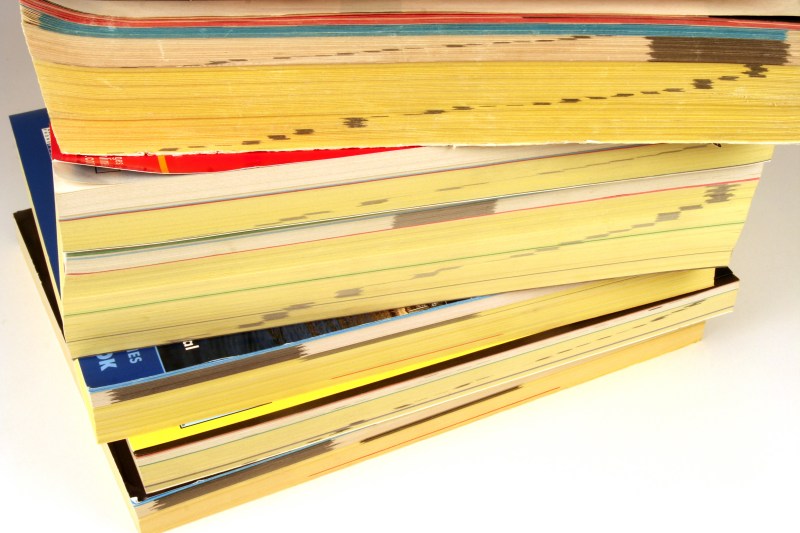Technical Audacity and the Phone Book

I often think we — or maybe the people who control our money — lack the audacity to take on really big projects. It is hard to imagine laying the transatlantic cable for the first time today, for example. When I want a good example of this effect, I usually say something like: “Can you imagine going to a boardroom of a major company today and saying, ‘We plan to run wire to every house and business in the world and connect them all together.'” Yet that’s what the phone company did. But it turns out, running copper wire everywhere was only one major challenge for the phone company. The other was printing phone directories. In today’s world, it is easy to imagine a computer system that keeps track of all the phone numbers that can spit out a printed version for duplication. But that’s a relatively recent innovation. How did big city phonebooks work before the advent of the computer?
Turns out, the Saturday Evening Post talked about how it all worked in a 1954 article. We aren’t sure there weren’t some computerized records by 1954, but the whole process was still largely manual. By that year, an estimated 60,000,000 directories went out each year in the United States alone. Some of these were small, but the Chicago directory — not including suburban directories — had over 2,100 pages. In New York City, the solution was to print a separate book for each borough. Even then. the Manhattan book was three inches thick and projected to grow to five inches by 1975.
It’s in the Book
If you aren’t old enough to remember phonebooks, they were printed in tiny small print — usually in a typeface called Bell Gothic — and on very thin paper. So five inches of book adds up to quite a few names. We don’t know how they arrived at the figure, but the article claims the book is 91.91% accurate. That seems like an awfully specific number and it makes us recall the old adage: “88.72% of all statistics are made up on the spot.”
Only nine printing presses in the country were able to handle the printing and binding of thick directories. Another thirty shops could handle smaller ones. But we can only imagine the amount of work that went into collating, updating, and typesetting. The article also talks about something that would be easy today but was a massive undertaking in the precomputer age: directory assistance.
From the article:
Manhattan Island alone has five information exchanges; at each one some 90,000 queries a day are received in automatic rotation by long rows of operators. The girls sit in glass-partitioned booths, surrounded by borough and suburbant directories. Close at hand is the printed daily addendum of 500 or so new numbers, which comes to the information operators about twenty-four hours after the phones have gone into service.
History
If you’ve never seen a real phone book, the Library of Congress has a whole collection you can view online. Need some plaster work done in Los Angeles in 1940? They’ve got you covered.
For some people, this was their big chance to see their names in print.
Phone books have been slowly dying for a long time. It isn’t surprising that some Canadian students had trouble using one.
Audacity
It is hard to think of projects quite this ambitious and audacious today. Maybe it is because, with computers and other modern tech, the whole undertaking would be manageable. Sure, we are going back to the moon, but that’s been done and with modern technology, it is less audacious than it was in 1969. We mobilized COVID 19 vaccines in record time, but that was in response to a crisis.
Sure, we spend plenty of money on big projects. Expensive telescopes and supercolliders come to mind. Quantum computers are expensive, but it just isn’t the same scale. Where are projects that truly break new ground on a massive scale? Maybe the hyperloop if we ever build one. It is hard to define why, but telescopes, supercolliders, big computers, and hyperloops don’t seem to have the grand scope of the phone system, the transatlantic cable, or delivering 60 million phone books a year. There are a few examples. The swarms of satellites to provide Internet access feels like a large-scale project. Stringing fiber everywhere there are phone lines isn’t very exotic, but it is a lot to handle.
What do you think? What’s the most audacious engineering project of our time? What’s the most audacious one you’d like to see? A space elevator? An underwater city? A flying airport? Let us know in the comments. Meanwhile, [Mike] thinks we shouldn’t even be using phone numbers anymore. As for big projects, sure they are costly, but the payout can be huge, too.
Post a Comment